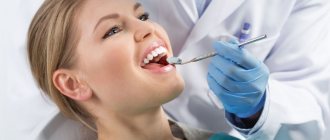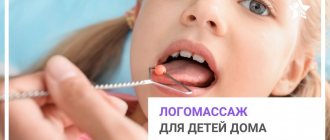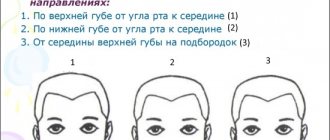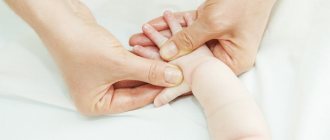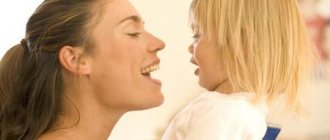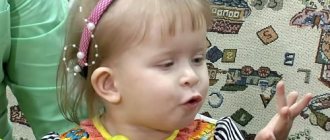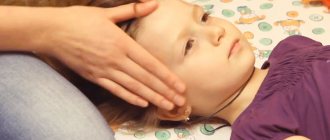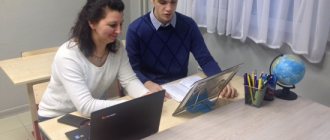Speech therapy massage is one of the methods used to correct speech. It is prescribed for complex pathologies when impaired muscle tone affects pronunciation. There are several proprietary methods used by speech therapists in their work. For some, you need to take special training courses, while other methods can be used by parents or the child himself at home. One of these author’s developments is speech therapy massage with spoons by O. I. Krupenchuk.
Its goal is to normalize muscle tone by stimulating certain points associated with the speech centers of the cerebral cortex. In this embodiment, they use spoons rather than probes with spatulas. During the massage, the speech therapist pronounces his actions, and the child repeats after him. Vernacularization of actions contributes to the development of speech. By working with this technique, you can not only normalize muscle tone, but also develop the pronunciation, lexical and grammatical aspects of speech.
Advantages of the technique O. I. Krupenchuk
Spoon massage is becoming increasingly popular not only in home exercises, it is also used in kindergartens. This method is effective and has a number of certain advantages over other options for speech therapy massage:
- The child does not have a negative reaction to cutlery. Many children do not like it when a speech therapist uses probes and spatulas in his work.
- To carry it out, you do not need to take special courses, so parents and children can do this massage at home.
- You can use different temperatures during classes, which makes it possible to carry out a relaxing or stimulating effect.
- This technique can be used in group and individual lessons.
Of course, for serious speech disorders, this technique will not be as effective as a probe. But if the child has a persistent negative reaction to probes and spatulas and if speech defects are not too complex (for example, erased dysarthria), it should be included in correctional classes.
How to do speech therapy massage yourself
Below are a few options that you can do at home yourself. The only thing I recommend is to go to a good speech therapist so that he can see if you are doing everything correctly. At the same time, the specialist will give recommendations for your case.
Before doing speech therapy massage at home, you need to ventilate the room well. Another important point is the absence of any painful sensations - all manipulations should be painless.
Method of speech therapy massage according to E.Ya. Sizova
All manipulations are performed with clean, warm hands, at least twice a day (morning and evening). We take no more than 5-7 exercises. We begin and end the massage with stroking.
Lip exercises:
- We stroke the upper lip from the middle to the corners of the mouth, without going back (5-7 times). Movements are performed slowly, without pressure.
- We do the same with the lower lip;
- We close our lips and stroke them from the middle to the corners of the mouth (5-7 times).
- We lightly tap the lips from the middle to the corners of the mouth with both hands (3-4 times).
- We perform spiral movements along the lips from the middle to the corners of the mouth (3-4 times). They can be done on each lip separately or on closed lips. We do not touch the nasolabial triangle.
- “Duckling” - lips are closed and slightly extended. Lightly pinching the lips (5–7 times) is performed.
- “Acupressure in the corners of the lips” - fingers are placed on the corners of the lips and circular movements are made in one place (5-7 times).
- We close our lips and stroke them from the middle to the corners of the mouth (5-7 times).
For the lower jaw:
- Stroking with two fingers from the middle of the lower jaw to the cheekbones (5-7 times).
- Lightly tap with two fingers from the middle of the lower jaw to the cheekbones (5-7 times).
- Spiral movements with two fingers from the middle of the lower jaw to the cheekbones (5-7 times).
- Lightly pinching with your fingers from the middle of the lower jaw to the cheekbones (5-7 times).
- Stroking with two fingers from the middle of the lower jaw to the cheekbones (5-7 times).
For language:
- Stroking the protruding tongue and its lateral edges from center to middle (5–7 times).
- Patting the protruding tongue from the middle downwards with the second and third fingers horizontally (5–7 times).
- Tapping the protruding tongue and its lateral edges from center to middle (5–7 times).
- Spiral movements along the protruding tongue from the middle to the tip of the tongue (5-7 times).
- Pinching with light movements of the tip of the tongue (5-7 times).
- Stroking the protruding tongue and its lateral edges from center to middle (5–7 times).
For the palate:
- Stroking the palate from the teeth into the depths of the oral cavity to the soft palate (5–7 times).
- Lightly tap the palate from the teeth into the depths of the oral cavity to the soft palate (5–7 times).
- Zigzag movements (right-left) along the center line of the palate (5-7 times).
- Spiral movements along the central line of the palate (5–7 times).
- Stroking the palate from the teeth into the depths of the oral cavity to the soft palate (5–7 times).
Massage with a toothbrush
It requires little preparation. First of all, you need to buy the toothbrush itself. It should be clean and specifically designed for activities, not for brushing teeth. The bristle of the brush should be soft. Additionally, you will need to buy a bandage. Before class you will need to make several swabs. They are placed under the tongue to collect saliva, which will be actively released during the massage. It is important to change tampons with new ones on time. This will need to be done approximately every 2 minutes.
If the mother of a small child acts as a massage therapist, in order to relax the baby, you need to carry out all the exercises in active contact and communication. You can hum a song, tell a fairy tale, turn on classical music, put out your favorite toys. You need to adapt to your child.
All massage exercises are based on stroking and light vibration. With the help of the latter, it is possible to achieve relaxation of muscles that are in hypertonicity. Stroking is performed with spiral or circular movements. The pressure should not be strong.
In the case when speech therapy massage is performed on a child with cerebral palsy, you need to choose the right position. It could be like this:
- Lying on your back. Be sure to put a cushion under your head. The lower limbs should be bent at the knees.
- Embryo position.
- On the stomach. A cushion is placed in the chest area.
When performing massage for cerebral palsy, the massage technique is aimed at relaxing the muscles of the tongue. Additionally, the zygomatic muscles, nasolabial fold and submandibular muscles are affected.
Massage with spoons
An important condition for any massage is the cleanliness of the hands and instruments that the specialist will use during the procedure. Speech therapy massage with spoons is performed using ordinary cutlery. The only condition: the absence of patterns and other protruding elements on the spoon that can injure the mucous membrane.
To perform the massage, you will need to take 2 teaspoons and a few in reserve in case they fall on the floor.
Parents should understand that if there are problems with speech, the tongue needs massage to a greater extent, but without activating the entire speech apparatus it is impossible to achieve the desired result. All exercises are repeated 8 times. The technique for performing speech therapy massage with spoons is as follows:
- Stroking the child's temples with the convex side of a spoon. Movements should be directed clockwise.
- Lightly stroking the eye sockets with the rounded side of the spoon. The spoon is initially guided along the brow ridge towards the outer corner of the eye. The spoon is returned under the eye.
- The convex side of the cutlery is used to stroke the child’s cheeks.
- Spiral movements with the convex side of the device in the temple area. Finally, you can do a few light presses (you need to be very careful).
- The chewing and mental muscles are kneaded in a circular motion with the rounded side of the spoon.
- Use the tip of the cutlery to “scrape” along the upper and then the lower lip. After this, make frequent presses.
When performing a massage, most children experience excessive salivation, so work is necessary to overcome drooling:
- Teach children to chew and swallow well first by example. You can first perform a passive movement, take the child by the chin and, as it were, make chewing movements up and down several times a day. You can use a pacifier to teach the swallowing process. First, we put it in the baby’s mouth, then we press on it so that the liquid flows out, we pull it out and make massaging movements in the neck area until the child swallows. Try to give your baby less pureed food, and more often boiled and dried meat.
- Teach how to suck up saliva and often swallow saliva in one push before doing exercises.
It is important to end the massage session correctly. To do this, you need to stroke your face with your hands and praise the child. A favorite game or a small surprise in the form of a sticker is considered a good conclusion to the procedure. The baby will be guaranteed a positive attitude, and next time he will agree to the procedure without any problems, knowing that a reward will follow.
In the presence of deep pathologies (rhinolalia, cerebral palsy) affecting the speech apparatus, it is not recommended to attempt to correct the defect on your own. Each child, as well as his clinical picture, is individual and requires a special approach for speech development, correction and treatment of disorders.
General tasks of speech therapy massage
Any of its variations are aimed at solving the following problems:
- stimulation of speech centers of the cerebral cortex;
- reduction or cessation of seizures, synkinesis;
- normalization of muscle tone;
- improving the functioning of articulation organs;
- improving the functioning of facial muscles.
Often during a session, the specialist voices his actions, focusing the child’s attention on sensations and the position of the organs of articulation. Therefore, speech therapy massage is an effective means of speech correction.
Finger logomassage for speech development
This type of manipulation has no contraindications. Finger speech therapy massage can be done for children up to one year old. The essence of the method is to influence the nerve endings by massaging the phalanges of the fingers. As a result of simple manipulations, the speech areas of the cerebral cortex are affected.
You need to start the impact from the little finger, from the nail to the base. Every joint needs to be worked. The exercise must be repeated on both hands.
Then you need to lightly press on your fingertips. You need to start the manipulation with light pressure and gradually increase their force.
After this, you need to start working on the surface of your palm, making circular movements with your index finger. To make it interesting for your child, you can diversify the exercise with nursery rhymes or rhymes (for example, “The White-sided Magpie”). Then you need to make circular movements from the edge to the center of the palm.
For finger massage, you can use a spiked ball or a special wooden exercise machine.
The goals of O.I.’s methodology Krupenchuk
Of course, massage with spoons is aimed at solving common problems. But it also has specific goals that need to be taken into account during classes:
- securing various positions of the spoon in the hand;
- development of fine motor skills;
- improving coordination of movements and the ability to navigate in space;
- correction of speech development.
All manipulations are performed while short poems are recited. This contributes to the development of the tempo-rhythmic side of speech, which affects the syllabic structure of the word.
Features of conducting classes using the methodology of O. I. Krupenchuk
Be sure to wash your hands and cutlery before the specialist begins the session. At the beginning of the lesson, an adult introduces the children to the parts of a spoon. The child is first given one cutlery and asked to take it with the hand with which he usually holds it. The speech therapist recites the poem and shows the movements, and the kids repeat after him.
At first, they do not make any movements with their face, but simply carefully examine the cutlery:
- It is held vertically in front of the face and turned with a hole away from you and towards you.
- Holding a spoon in one hand, with the other hand they show and name all its parts.
Having mastered these actions, the children take the second spoon. All manipulations are now done synchronously. Then proceed to self-massage:
- Heaps of spoons stroking the lines of the forehead.
- Perform the same manipulations in the cheek area in a circle.
- Similar actions are performed in the temporal areas. Only apply gentle pressure at the end of each movement.
- The side side makes a movement in the direction from bottom to top along the cheeks.
- Stroking movements of the upper lip with the tips of spoons.
- Gent but frequent pressure over the entire surface of the lips with the same part of the spoon.
- Use heaps of spoons to knead the cheeks in a circle.
- The same manipulations, only in the direction from the corners of the mouth to the temples.
- Patting movements with heaps of spoons on the cheeks.
Each specialist can add his own movements, depending on the child’s characteristics. Due to the fact that it is possible to control the temperature of cutlery, it is possible to normalize the state of muscle tone. If they are warm, you will get a relaxing massage, which is necessary for increased tone. Cold spoons can have a stimulating effect, which is effective for hypotension.
Logomassage techniques
There are several techniques. They differ in the method and strength of impact.
Speech therapy facial massage for children is done separately for each area.
The session must be carried out sequentially. All movements must be performed strictly from top to bottom. Excessive effort can cause discomfort during exercise. Therefore, you do not need to put a lot of pressure on your face and make a lot of effort. Hands should be relaxed and movements should be smooth.
You need to start from the forehead, from the middle to the temples, then from the eyebrows to the hair. Then you need to start kneading your forehead with light movements.
The next area to work on is the cheeks. It is necessary to knead their surface, stretch it from the corners of the mouth to the temples, from the cheekbones to the lower jaw.
Then you need to move on to the nose area. You need to start the lesson with light stroking of the wings of the respiratory organ. Then they need to be stretched. The nose massage ends with stroking from the nose to the corners of the mouth.
The next area of influence is the chin. All actions in the specified area are performed from the middle of the mouth to its corners.
The final stage is the impact on the neck area. At this stage, stroking and kneading movements are performed.
You can conduct the lesson at home. It is important to maintain hygiene standards. This will reduce the risk of infections.
